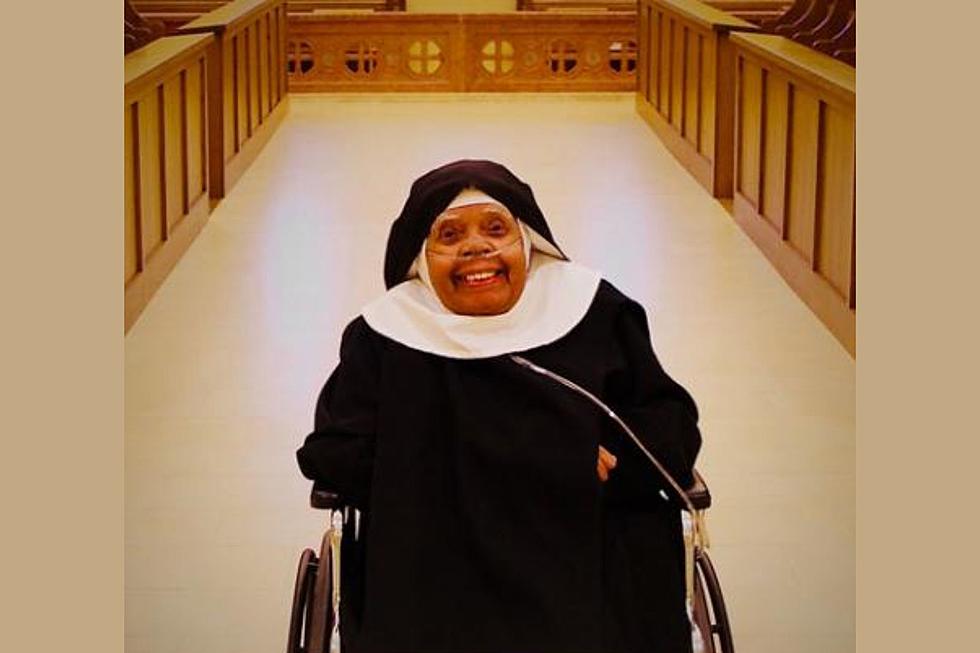
Catholics Flocking To Rural Missouri To Witness Miracle
By now you've probably seen the news reports about the miracle taking place in Gower, 45 minutes to an hour north of Kansas City. It seems the Benedictine Sisters of Mary, Queen of the Apostles, were getting ready to move the remains of their foundress, Sister Wilhelmina Lancaster, to her body's final resting place inside their monastery chapel when they experienced the unexpected.

When we die, we decompose. It doesn't matter if we've been embalmed or not. Embalming does slow the body's decomposition but doesn't stop it. So when the nuns of Sister Wilhelmina's order decided to move her body into the monastery chapel, which is a long-standing custom for founders and foundresses of Catholic religious orders, four years after her death they expected to primarily be moving her bones.
Instead, they unearthed, according to multiple media reports, a largely intact body. Even though Sister Wilhelmina wasn't embalmed and her wooden coffin had developed a crack that let dirt and moisture get at the body.
Without getting too much into Catholic church traditions and doctrine, Incorruptibility is a Catholic belief that divine intervention allows some human bodies to completely or partially avoid decomposition after death as a sign of their holiness. It's thought to occur even in the presence of factors that usually hasten decomposition. In Catholicism, if a body is judged to be incorruptible after death it's a sign that the individual is a saint.
That said, some faithful Catholics aren't waiting for the protocols of Cannon Law to be followed, and Sister Wilhelmina to officially become a saint. A lot of them are heading to Gower to see the miracle.
According to Catholic News Agency, Mother Cecilia, OSB, and head of the monastery examined what was in the coffin first.
"The body was covered in a layer of mold that had grown due to the high levels of condensation within the cracked coffin. Despite the dampness, little of her body and nothing of her habit disintegrated during the four years." CNA reports, that Mother Cecilia, after thinking she saw a fully intact foot, looked again more carefully.
CNA goes on to report that rumors of a flood cracking open the casket and that sisters examining it by flashlight in the middle of the night are greatly exaggerated. Additionally, the sisters put out a fact sheet to answer questions about the exhumation. CNA directly quotes from that fact sheet:
“Not only was her body in a remarkable preserved condition, her crown and bouquet of flowers were dried in place; the profession candle with the ribbon, her crucifix, and rosary were all intact,” the sisters reported.
“Even more remarkable was the complete preservation of her holy habit, made from natural fibers, for which she fought so vigorously throughout her religious life. They synthetic veil was perfectly intact, while the lining of the coffin, made of similar material, was completely deteriorated and gone.”
Sister Wilhelmina lived a remarkable life. Mary Elizabeth Lancaster, her name before taking religious vows, was born in St. Louis on April 13, 1924. During her childhood in St. Louis, she experienced a mystical vision at her First Communion that would eventually lead her to join the Oblate Sisters of Providence in Baltimore and devote her life to God.
During her youth in St. Louis, she experienced racism, as well as ridicule for being Catholic in a mostly Baptist and Methodist neighborhood. She never harbored resentment for her treatment. Later, when the Catholic high school became segregated she attended St. Joseph’s Catholic High School for Negroes, which her parents helped found.
After graduation, she entered the Oblate Sisters of Providence and spent the first 50 years of her religious life with them. During this time she served as a teacher, historian, and musician. She also witnessed the changes and modernization of the Catholic faith and the changes they brought to many religious orders including her own.
During and after the changes in the Catholic Church Sister Wilhelmina began to desire a change in her life, one that was more contemplative and spiritual. This led to her, at 70 years old, leaving the Oblate Sisters of Providence and forming her own multicultural religious order of nuns dedicated to the Rule of St. Benedict and to the pre-Vatican II rubrics of the Divine Office and the Mass in Pennsylvania.
In 2006 her order accepted the invitation of Bishop Robert W. Finn of the Dioceses of Kansas City - St. Joesph to relocate to his diocese. That led them to the Abbey of Our Lady of Ephesus in Gower, where they currently live, and the adoption of the religious order's name the Benedictine Sisters of Mary, Queen of the Apostles.
As a religious order, they've been very successful in recruiting young women to become nuns in their order, something that most Catholic religious orders have had difficulty doing. They've also had success sharing their music with the world. They've released a dozen albums as "Benedictines of Mary, Queen of the Apostles" four of which topped the Billboard Classical Charts. As well as being named Billboard's Classical Artist of the Year, while Sister Wilhelmina was still alive.
For more on her life check out the articles from Black Catholic Messenger and Catholic News Agency. As well as her obituary from Catholic Key. All sources I used in writing the above sketch of her life and work.
I might get in the car and join the faithful visiting Sister Wilhelmina. Not so much because I need to witness a miracle, or potential miracle with my own eyes. But to pay my respects to a wonderful woman who gave so much to others. And to thank God for giving us men and women motivated to make our world, or the part of the world they inhabit, a better place.
Abbess Cecilia told Catholic News Agency that God "protected that body and that habit to enkindle our faith, to rekindle it, to bring people back to the faith.” Which in my opinion, seems like the perfect reason for Him to perform a miracle in rural Missouri.
Sister Wilhelmina's body will be on display at the Abbey in Gower through the morning of May 29, from 8:15 AM - 8:00 PM CDT. Eventually, Sister Wilhelmina's body will be encased in glass for long-term viewing.


